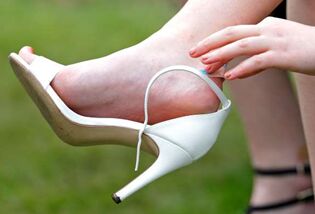怎样让高跟鞋穿起来更舒服
|
It happens to everyone - you find that one pair of shoes you just need to have in your closet, spend a whole paycheck to buy them and when you finally, finally get to wear them out the door, the inevitable happens - one block down the street you already feel a blister (or two!) coming on. In an instant, a pair of shoes you've saved up for become forever unwearable. We've all been there. It seems that even when we opt for the comfiest shoes imaginable, there's a pesky strap, hard insole or heel that causes immediate friction and discomfort. So how can we make sure our new kicks won't get shoved to the back of our closet?
How Do Bisters Form in the First Place? Dr. Hoke explains that "It's not so much pressure as the gliding of the skin on the surface," he tells PeopleStyle. "And so, really your skin is trapped between a bone that's moving back and forth and your body is trying to create a pad. So it separates the layers and then the fluid leaks into that space and that creates the blister. So a lot of treating it means trying to reduce that friction." What Are the Best Ways to Treat the Area? If a blister already formed, Dr. Hoke says the main thing you want to do is keep the area clean. "The one thing you want to be careful about is popping this blister," he explains. "The best barrier for infection is your skin. And so once you pierce that, you open yourself up to the world. It's better to leave it and keep that [area] sterile." According to Dr. Hoke, the best bandage to look for is Spenco 2nd Skin. "It's a little sheet, almost like silicone so it doesn't just protect the blister, it absorbs the shoe that causes it," he says. "It treats the problem, it's not just covering it. You can cover a blister with a Band-Aid but you're still going to get that same friction across it." |









